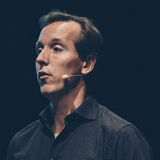Summary
Karen shares her experience growing a UX design group at GE Healthcare starting around 2007 with minimal resources, evolving it through becoming internal consultants delivering value across GE divisions such as aviation and oil and gas. The team collaborated with Intersection to develop journey maps to better understand and improve health care experiences. On hiring diverse, non-traditional candidates, Karen emphasizes aligning interview criteria early and leveraging external design community resources. She and others discuss metrics for UX success including task success rates, error counts, time to complete, confidence, and measures of delight, highlighting the limits of physiological emotion monitoring in everyday software. Karen also explains the creation of Design for Delight forums intended to build shared UX vocabulary and inspiration, but recognizes talk alone did not drive significant impact. Panelists emphasize advocating UX value in legacy environments by bringing customers and executives together to hear real user frustrations and telling compelling user stories rather than only promoting methods. Sam and others advise supporting teams struggling with problems to demonstrate UX benefits. The Jesse Helm strategy is mentioned as a parallel principle: ignore detractors, focus on allies and fence-sitters to sustain UX progress. Overall, the session centers on practical strategies to embed UX design culture and metrics within large organizations and influence change despite constraints.
Key Insights
-
•
GE Healthcare's UX design group grew by acting as internal consultants across multiple GE divisions, increasing budget and influence.
-
•
Journey mapping for healthcare UX was developed collaboratively with the design firm Intersection, founded by prominent designers.
-
•
Hiring diverse, non-traditional design candidates requires upfront alignment on evaluation criteria and leveraging external design community benchmarks.
-
•
Key metrics for UX success include task completion rates, errors, time to complete, user confidence, and subjective delight.
-
•
Physiological measures of emotion like heart rate or pupil dilation have high noise in everyday software usage and low utility.
-
•
Design for Delight forums aimed to build shared UX language and inspire employees but lacked impact because they focused on talking, not doing.
-
•
Advocacy for UX adoption in legacy, constrained environments is more effective through user stories, videos, and customer voices than abstract arguments.
-
•
Bringing executives and real users together in design thinking sessions creates emotional resonance and stronger buy-in for UX initiatives.
-
•
Helping a team solve a tangible problem demonstrates UX value better than promoting research techniques theoretically.
-
•
The Jesse Helm strategy advises ignoring detractors, embracing allies, and focusing on fence-sitters to sustain change efforts.
Notable Quotes
"When I got to GE Healthcare in late 2007, we had no budget, no people, so we became entrepreneurs and acted as internal consultants."
"We used the money earned from consulting other GE divisions to rebuild our studios and develop brand and design language principles."
"The journey map was created in partnership with Intersection, a design firm founded by Chuck Pelley and Joan Greger."
"To fairly evaluate non-traditional candidates, you need alignment on what you're looking for before the interview."
"For UX success, we measure if people can do their tasks successfully, time to complete, error count, confidence, and delight."
"Physiological signals like heart rate and pupil dilation are noisy for day-to-day software usage and not practical for measuring delight."
"The Design for Delight forums were good for shared stories and vernacular, but didn’t create significant impact because people were talking, not doing."
"Bringing actual users into the room to share their frustrations makes it very hard for developers or executives to ignore the problems."
"Find an unindicted co-conspirator—someone with a problem you can help solve—and your story spreads without having to wave your hands."
"Ignore the people who hate you, embrace those who love you, and focus on the fence-sitters—this is the Jesse Helm strategy."
Or choose a question:














More Videos

"A 101 conversation over coffee yields better insights than written reviews in 360 assessments."
Adam Cutler Karen Pascoe Ian Swinson Susan WorthmanDiscussion
June 8, 2016

"UX directors often feel like this poor person in the middle here getting pulled in all these directions."
Peter MerholzThe Trials and Tribulations of Directors of UX (Videoconference)
July 13, 2023

"In the automotive industry, most safety standards only became mandatory after governments intervened."
Lisa WelchmanCleaning Up Our Mess: Digital Governance for Designers
June 14, 2018

"Green spaces in cities can greatly enhance our quality of life and resilience."
Vincent BrathwaiteOpener: Past, Present, and Future—Closing the Racial Divide in Design Teams
October 22, 2020

"Design your processes around learning, have blameless post mortems and celebrate failures especially."
Brenna FallonLearning Over Outcomes
October 24, 2019

"Thick data is the opposite of big data; it’s stories, qualitative, and crucial during moments of rapid change."
Tricia WangSpatial Collapse: Designing for Emergent Culture
January 8, 2024

"Research should be done the same way products are built, with stakeholders as your users."
Edgar Anzaldua MorenoUsing Research to Determine Unique Value Proposition
March 11, 2021
"Knowledge needs to be thought of as a reusable circular process, not a linear one ending at project completion."
Designing Systems at Scale
November 7, 2018

"Ethics evolve faster than law; just because something is legal doesn’t mean it’s ethical."
Erin WeigelGet Your Whole Team Testing to Design for Impact
July 24, 2024















